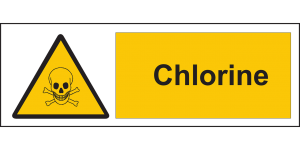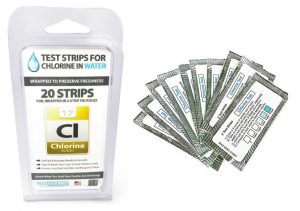
Why Chlorine Is Added to Our Water
Before public water treatment plants existed, contaminated water often led to sickness and death. As sanitation systems improved, so did water quality, but officials wanted additional protection against contamination, and they began to add chlorine to the water to make it safer for people to drink.
Now that chlorine is routinely added to public water sources, fewer people contract water-borne illnesses. However, there are risks to adding too much chlorine to our water. Research suggests that there is a connection to increased chances of cancer when drinking water contains high levels of chlorine.
Is Chlorine in Drinking Water Safe?
Water is exposed to contaminants as it makes its way from the source to your tap. It passes through an extensive series of pipes both outside and inside your home. Along the way, dirt and bacteria can easily be picked up by the water. Adding chlorine to public water supplies is a cost-effective way to kill harmful organisms in a large supply of water.
The amount of chlorine in our tap water is concerning since chlorine is a poisonous gas. It is considered a hazardous chemical because in water it reacts with other elements that are present. When this occurs, trihalomethanes or THMs are created. THMs are toxins and have been known to cause several serious conditions in humans, including heart disease, cancer, asthma, and eczema.
While chlorine may rid our water of harmful contaminants, at high levels it also may have some negative health effects. High levels of chlorine in the water can lead to an increased presence of THMs. This means that it’s important to know exactly how much chlorine is in the water your drinking.
How to Test for Chlorine Levels
To determine the exact levels of chlorine in your drinking water, you may opt for professional testing. You can collect samples and mail them to a lab for analysis. This can be costly, and it may take weeks to get your results.
Instead of sending your samples to a lab, an alternative is at home testing. There are a number of different tests that will give you quick results without the need to mail samples away to a lab.
First is a test solution kit. This involves the use of chemicals added to your water sample. When the sample changes colors, you compare it to a color chart. You can also use DPD chlorine testing tablets. Simply add a tablet to your water sample and when it changes colors, compare the sample to the results color chart.
The simplest way is to determine chlorine levels is with a test strip. TestAssured makes chlorine test strips that will give you results in less than five minutes.
 To perform the chlorine test:
To perform the chlorine test:
- Remove the test strip from the packet.
- Pick up the strip at the end with no pads.
- Dip the strip in the sample three times and remove without shaking off excess water.
- Hold the test strip level for two seconds.
- Place the strip on the results color chart to determine the precise amount of chlorine in your water sample.
What Are Safe Chlorine Levels in Drinking Water?
The Environmental Protection Agency has determined that chlorine levels are safe at four parts per million or below for drinking water that comes from a public water source or from a well.
The EPA has also set enforceable regulations for disinfectants, called a maximum residual disinfectant level (MRDL). These are the safety levels set for the different types of chlorine that may be added to water:
| Disinfectant | MRDL Level |
|---|---|
| Chloramine | 4.0 mg/L or 4 ppm as an annual average |
| Chlorine | 4.0 mg/L or 4 ppm as an annual average |
| Chlorine Dioxide | 0.8 mg/L or 800 ppb as an annual average |
Health Issues with Chlorine in Water
Clinical research has been performed on chlorine in water, and the discoveries may shock you.
- Harvard researchers determined that subjects who regularly drank chlorinated water had a 21 percent chance of contracting bladder cancer.
- A study published by the Journal of the National Cancer Institute reported that those who drink chlorinated water over a long period of time had an 80 percent chance of developing bladder cancer. Test subjects also had a 38 percent risk of contracting cancer of the rectum.
- In another study, scientists discovered that subjects who drank chlorinated water for a period of 15 years or more had an increased risk of developing colon cancer.
Although chlorine has helped to protect us from dangerous microorganisms in our water, it doesn’t come without risk. It’s important to know how much chlorine is in your drinking water so that you aren’t putting yourself in danger of serious health issues from long-term exposure.
